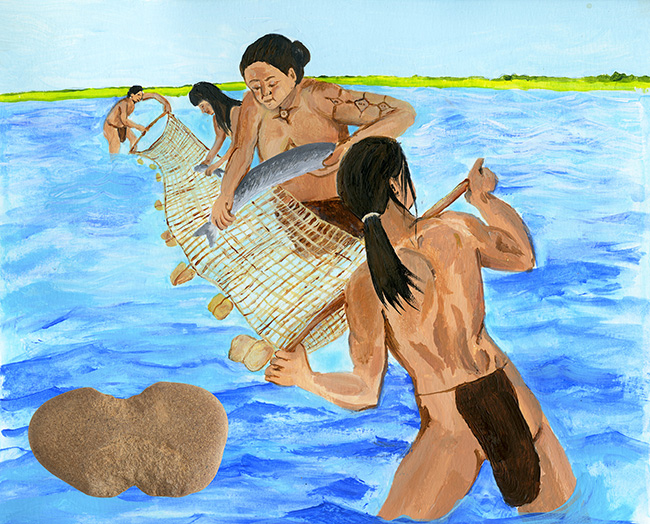Rachel Tebbetts, Arkansas Archeological Survey
"Archeology is..." series - September 2024

In many types of archeological publications, illustrations are the most effective way to get someone’s attention. Artwork has the potential to immediately engage the viewer, unlike written or oral descriptions. Since archeologists rely heavily on written communication for publication, illustrations are often necessary to aid comprehension of the analyses of archeological studies. Careful drawings supplement text to prevent misinterpretation due to a lack of clarity in an author’s written description. That is not to say that all archeological renderings are inherently excellent. While careful illustrations can enhance a report, poor quality illustrations may appear amateurish or embarrassing to authors and publishers. Poor illustrations may also give an incorrect or confusing impression about the subject matter being presented to readers. Because of this, it is necessary to put a good deal of time and effort into creating any archeological rendering.
Archeological illustrations are usually defined by their purpose and who the intended audience is. The means of producing illustrations has changed through time, especially in the twenty-first century with the development of computers. Archeological illustrations are used for a variety of purposes: mapmaking, architectural floor plans, architectural reconstruction drawings, showing stratigraphic sections, representations of relief sculptures and/or rock art, depictions of whole ceramic vessels, sherds, figurines, stone artifacts (such as point types), shell and bone artifacts, etc.
Photography is widely used today as another means of archeological illustration. The purpose of photography and line drawing (however it is produced, digitally or by hand) is to transform a visual perception of a subject from three dimensional to two dimensional. Line drawings can be a more informative way of representing a subject two dimensionally than photographs because the camera can only show what is exposed to the lens by light. Drawings can portray hidden surfaces, angles, and views that may be beyond the scope of a camera lens.
Much of the work I do as the Survey’s graphic artist is created on a computer or using a camera, but some special projects require a more tactile approach using graphite, pen, or paint on paper. When I made illustrations for the book, Ways of the Ancestors, I used archeological data and interpretations to create action scenes to give context to how artifacts might have been used in precontact times. The author, George Sabo III, verbally described how the artifacts were used. Then I researched related current images, as well as illustrations and images in other archeological or historical publications as source materials for creating new drawings. For instance, in the case of netting stones, I used a combination of images of modern net fishers in action, illustrations of gill nets, and anatomical figure drawings to create a painted interpretation of precontact Native Americans using a net fixed with netting stones.
Archeological illustration is not limited to any one group of people. All that is needed to create a good quality illustration is an understanding of the subject matter being presented, guidance from a skilled illustrator or information thereof, practice, and an investment of time and attention. As the graphic artist for the Survey, I have used my artistic skills to create many types of illustrations for a variety of purposes. Art in archeology contributes to publications, recordkeeping, public outreach, and more by translating archeological data into something more widely understood—artwork.

